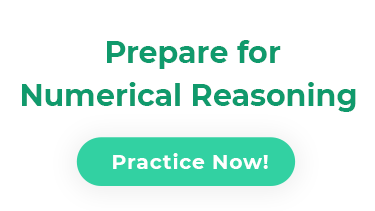If your employer or prospective employer has asked you to take a numerical critical reasoning test, then you’re in for a challenge. These exams are widely known as the most difficult psychometric examinations around, and they’ll demand all of your attention and ingenuity. Here’s what you should know going for the interview.
What’s the Difference Between a Numerical Reasoning Test & a Quantitative Critical Thinking Test?
A numerical reasoning test is fairly straightforward insofar as it uses standard algebraic formulas and geometric theorems. A regular numerical reasoning exam won’t require all that much creativity. As long as you’re comfortable using percentages, ratios, proportions, etc., you shouldn’t have too much difficulty arriving at the answer.
A quantitative critical thinking test, by contrast, will require much more from you. Not only will you have to extract information from graphs, tables, and word problems, but you’ll also have to manipulate data in strange ways and pull in outside information to come to a conclusion.
What Does a Critical Reasoning Test Prove?
Critical reasoning questions test your ability to think outside the box and solve problems in new ways. Innovative companies like Apple and Google are always on the search for clever engineers who bring a fresh perspective to the team and approach dilemmas from new angles.
As Einstein once said, “Insanity is doing the same thing over and over again and expecting different results.”
While your new job probably won’t require you to solve logic puzzles at your desk, you’ll surely face unforeseen obstacles and challenges. By requiring this test as part of the hiring process, the company is hoping to find unique, fertile minds with new ideas.
Who Do Numerical Critical Reasoning Tests Assess?
Numerical critical reasoning tests are used to test any job-seekers from entry-level graduate applicants to senior level professionals. The pre-employment screening questions used on these psychometric exams are designed to test critical thinking skills required to make calculated decisions on an everyday basis.
What Do Numerical Critical Reasoning Tests Assess?
Unlike a standard numerical reasoning test, quantitative critical thinking tests are more unpredictable. You can practice abstract reasoning questions, logic puzzles, and estimation problems, but critical reasoning tests are designed to trick you.
How to prepare for a Numerical Critical Reasoning Assessment?
That is to say, that chances are more than likely you’ll encounter problems you haven’t seen before. The best way, and perhaps the only way, to prepare for this kind of exam is to review your standard formulas. Critical reasoning tests usually don’t last longer than about 20 minutes, so you’ll be working under pressure. The last thing you’d want is to forget the mathematical knowledge you do have.
Final Preparation Tips:
Quantitative critical reasoning isn’t simple. It requires a great deal of creativity and concentration. Not only do you need to have mastered the basics, but you need to be able to manipulate mathematical rules in unpredictable ways. These online questions and videos can get you started on numerical critical reasoning, but if you want to be really prepared for the assessment center, make sure to check out some of our resources below.

